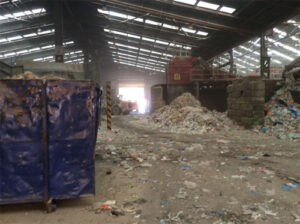 With high levels of dirt and dust, waste recycling plants are challenging environments for life safety systems to operate in. Disruption from unwanted alarms can result in unnecessary costs, such as waste redirection, moving stored materials to safety and process downtime. This makes the use of ultra-reliable and accurate fire detection essential.
With high levels of dirt and dust, waste recycling plants are challenging environments for life safety systems to operate in. Disruption from unwanted alarms can result in unnecessary costs, such as waste redirection, moving stored materials to safety and process downtime. This makes the use of ultra-reliable and accurate fire detection essential.
The 200,000ft² Premier Waste UK facility in Birmingham combines dust and moisture in very high levels. A misting system is in constant use to damp down dust and deal with odour issues, and the processing of construction and commercial waste, including packaging, creates a considerable fire hazard.
To monitor the facility the company has over 15 fire marshals to carry out checks every 60 minutes, as well an on-site fire engine with a water tank holding in excess of 620,000 litres of water, along with five fire hydrants. Having previously used heat detectors to monitor the site, Premier Waste UK was experiencing a high instance of disruptive unwanted alarms – as frequently as every other day – along with a potential timing delay from waiting for the amount of heat to spike quickly enough to trigger the system.
Premier Waste UK’s Operations Director, Wayne Clark, explains: “It was clear that the use of heat detectors didn’t provide the earliest warning that would allow us to minimise the problems caused by fire events. Therefore, we worked with Advanced Fire Solutions to come up with an alternative and it was clear that aspirating smoke detection would be the only technology that could cope with the extreme environments we face.”
Environmental conditions at the plant can fluctuate considerably from area to area and whole plant monitoring was required. After assessing what the aspirating smoke detection market could offer, Premier Waste UK decided that Honeywell’s FAAST system, controlled by Notifier’s Pearl control panel, would offer the most effective solution.
The FAAST system consists of an enclosure, housing the electronics that are powered from a supply, and a fan inside it that draws air in via pipes that are connected to the unit. The air that is drawn in then goes through a patented filtration process. It then passes across a dual source blue LED and infrared laser projected into the air itself and, if enough smoke particles are detected, an alarm condition is activated. FAAST’s pipework contains sampling holes at predetermined locations, through which the air is drawn.
Premier Waste UK’s Wayne Clark is delighted with the impact of the solution, and concludes: “I can’t remember the last time we had an unwanted alarm. When a fire event occurs, we can now respond much quicker, and this reduces business interruptions as well as risks.”

